Foraging and brewing wild pine needle tea is an enjoyable way to tap into nature's goodness. Start by identifying pine trees with needle clusters and smooth bark. Use harvesting shears to snip fresh, green needles, avoiding older ones to guarantee a pleasant flavor. Rinse your collection and chop the needles into one-inch pieces. For brewing, steep 1-2 tablespoons in boiling water for 10-15 minutes. Enjoy the tea hot, perhaps enhanced with honey or lemon. This drink's rich Vitamin C content and antioxidant properties support your well-being. If you're enthusiastic for tips and tricks, keep exploring!
Identifying Pine Trees

When you're out in the woods or your backyard, spotting pine trees can be a fun challenge. First, look for their distinctive needle-like leaves, which usually grow in clusters. Some pines have long needles, while others feature shorter ones. For example, Eastern White Pine has five needles per cluster, while the Loblolly Pine has three.
Next, check the bark. Pine tree bark varies from smooth and gray in young trees to rough and scaly in older ones. You'll often find that the bark color can range from light brown to dark reddish-brown.
Pay attention to the overall shape of the tree, too; many pines have a pyramidal form, especially when they're young.
Also, look out for the cones. Pine cones can differ in size and shape, providing another clue for identification. Some species, like the Sugar Pine, have long, slender cones, while others, like the Ponderosa Pine, have stout, rounded cones.
Foraging Techniques
Once you've identified the right pine trees, it's time to gather your supplies and head out foraging. You'll want to be prepared to guarantee a successful and enjoyable experience. Here are three essential items to bring along:
- Harvesting Shears: A good pair of shears will help you snip off fresh pine needles easily. Look for young, vibrant needles that are tender and full of flavor.
- A Basket or Bag: Use a basket or a breathable bag to collect your pine needles. Avoid plastic bags, as they trap moisture and can cause the needles to spoil.
- Field Guide: A field guide can help you confirm your pine tree identification and guarantee you're foraging safely. It's always wise to double-check your findings.
As you forage, be respectful of nature. Only take what you need, and always leave enough for wildlife and future growth.
Remember to forage sustainably; this guarantees you can return to the same spot for more pine needles later. With your supplies ready and techniques in mind, you'll be well on your way to gathering the freshest pine needles for your tea!
Preparing Pine Needles
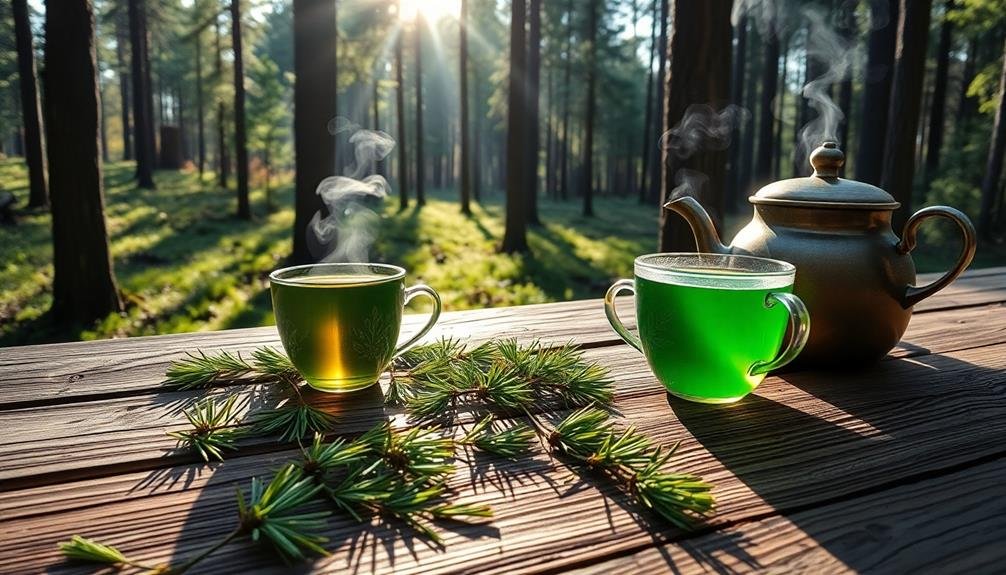
Preparing pine needles for tea is a straightforward process that can enhance your foraging experience. First, you'll want to gather fresh, green pine needles, as older or brown needles may taste bitter. Aim for needles from species like Eastern White Pine, which are known for their pleasant flavor and aroma.
Once you've collected your pine needles, rinse them under cold water to remove any dirt or insects. After rinsing, you'll need to chop the needles into smaller pieces, about one-inch long. This helps release their essential oils and flavor when brewed.
Here's a quick reference table to help you remember some key steps:
| Step | Action | Notes |
|---|---|---|
| Gather | Collect fresh needles | Preferably from young trees |
| Rinse | Wash under cold water | Remove dirt and insects |
| Chop | Cut into one-inch pieces | Increases flavor release |
With your pine needles prepared, you're all set to move on to the brewing process for a delightful cup of tea!
Brewing Pine Needle Tea
With your pine needles ready, it's time to brew a delicious cup of tea. The process is simple and rewarding, allowing you to enjoy the fresh, aromatic flavor of the forest. Here's how to do it:
- Choose Your Method: You can either steep the needles in hot water or simmer them for a stronger flavor. If you prefer a lighter taste, go for steeping; for something bolder, simmering is your best bet.
- Measure Your Ingredients: Use about 1-2 tablespoons of fresh pine needles for every cup of water. If you're simmering, you can increase the amount a bit for a more intense brew.
- Heat and Steep: Bring your water to a boil, then add the pine needles. If you're steeping, let it sit for 10-15 minutes. If you're simmering, let it bubble gently for about 20-30 minutes.
Once brewed, strain out the needles, and your tea is ready to enjoy! Feel free to add honey or lemon for extra flavor. Savor the unique taste of your wild pine needle tea!
Health Benefits of Pine Needle Tea
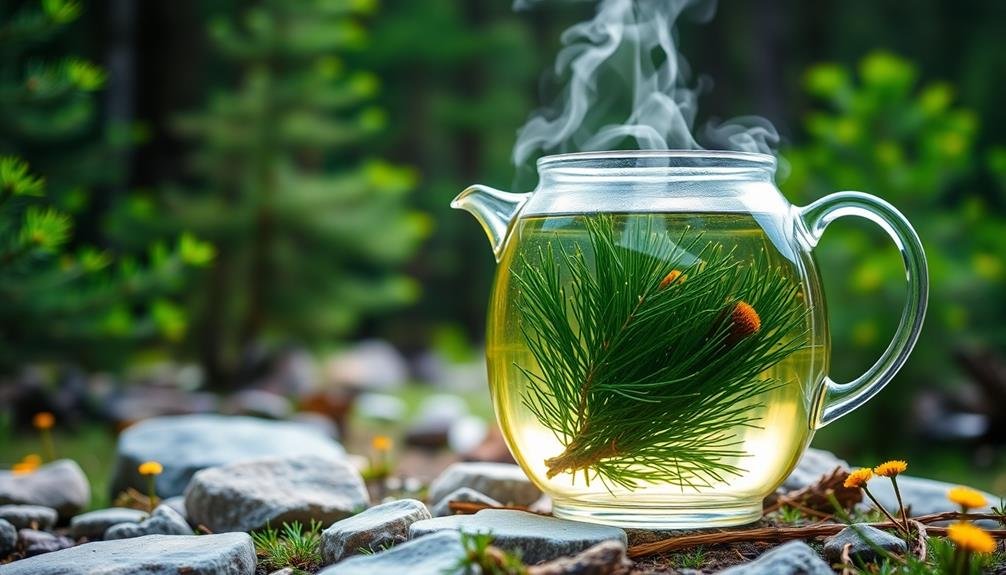
Pine needle tea offers a remarkable array of health benefits that make it a worthwhile addition to your wellness routine. Packed with vitamin C, it boosts your immune system, helping you fend off colds and infections. The high antioxidant content supports overall health by combating free radicals, which can lead to chronic diseases.
Drinking pine needle tea can also improve respiratory health. Its natural compounds help relieve congestion and soothe coughs, making it an excellent choice during flu season. Additionally, the anti-inflammatory properties may alleviate symptoms related to arthritis and other inflammatory conditions.
Moreover, pine needle tea contains essential oils that promote relaxation and may reduce stress levels. This calming effect can enhance your mood and improve sleep quality. If you're looking for a natural way to detoxify, this tea can support digestion and promote liver health.
Lastly, the invigorating taste of pine needle tea can help you stay hydrated, which is crucial for maintaining energy levels and overall wellness.
Frequently Asked Questions
Can I Use Pine Needles From Any Pine Tree Species?
You can use pine needles from many pine tree species, but not all are safe. It's best to research specific types, as some may contain harmful compounds. Always verify before consuming any foraged plant material.
How Long Can I Store Dried Pine Needles?
You can store dried pine needles for up to a year if kept in an airtight container, away from light and moisture. Make sure to check for freshness before using them in your preparations.
Are There Any Allergic Reactions to Pine Needle Tea?
Yes, some people might experience allergic reactions to pine needle tea, such as skin rashes or respiratory issues. It's best to start with a small amount, and if you notice any symptoms, discontinue use immediately.
What Equipment Do I Need for Brewing Pine Needle Tea?
To brew pine needle tea, you'll need fresh pine needles, a sharp knife for cutting, a pot or kettle for boiling water, a strainer to catch the needles, and a mug to enjoy your tea.
Can I Mix Pine Needle Tea With Other Herbal Teas?
Absolutely, you can mix pine needle tea with other herbal teas! Experiment with flavors like mint or chamomile for a unique blend. Just make sure the combinations complement each other to enhance your overall tea experience.
In Summary
Now that you know how to identify, forage, prepare, and brew pine needle tea, you're ready to enjoy this unique and nutritious beverage. With its delightful flavor and numerous health benefits, it's a rewarding experience that connects you to nature. So grab your basket, head outdoors, and embrace the adventure of foraging. You'll not only quench your thirst but also nourish your body with every sip. Happy brewing!

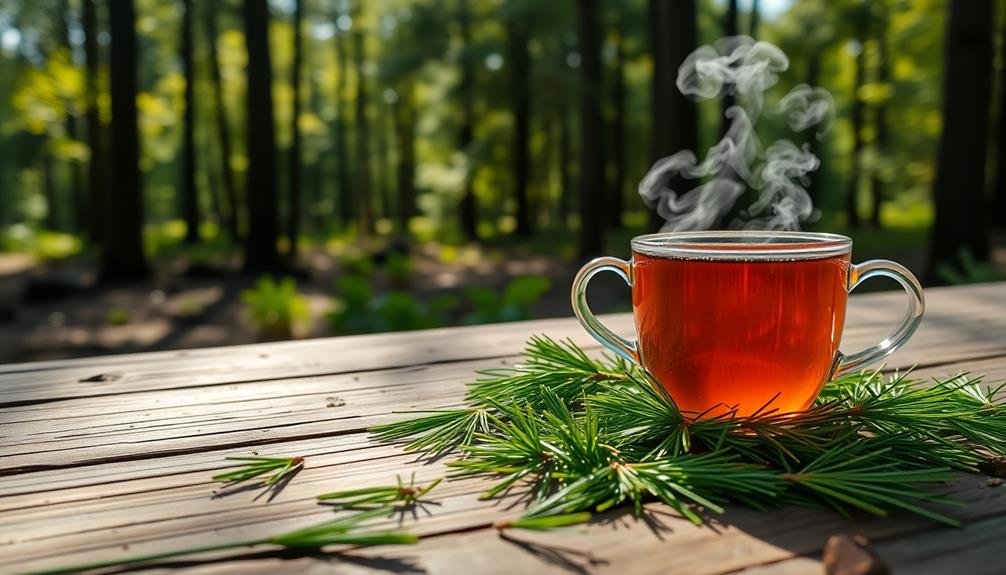
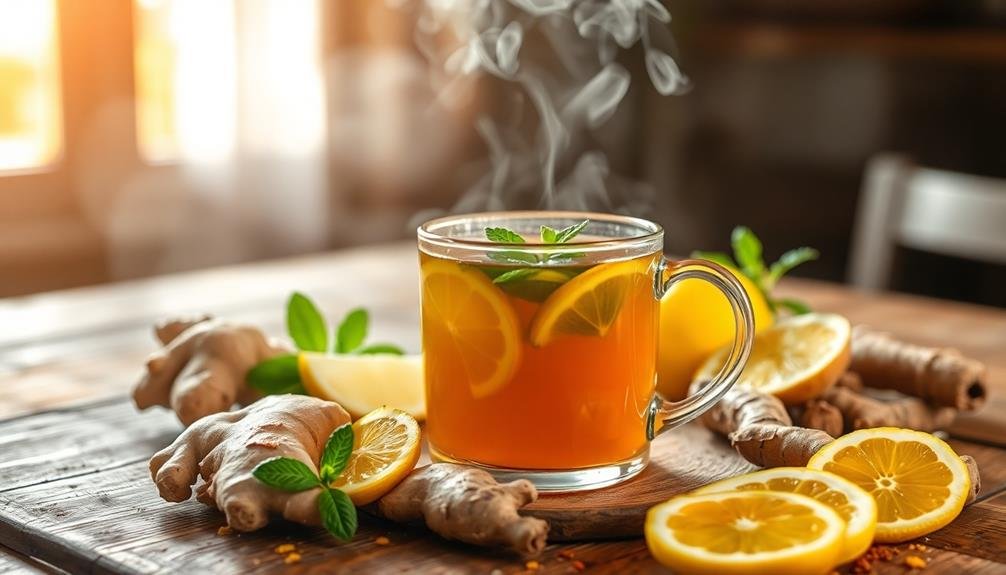
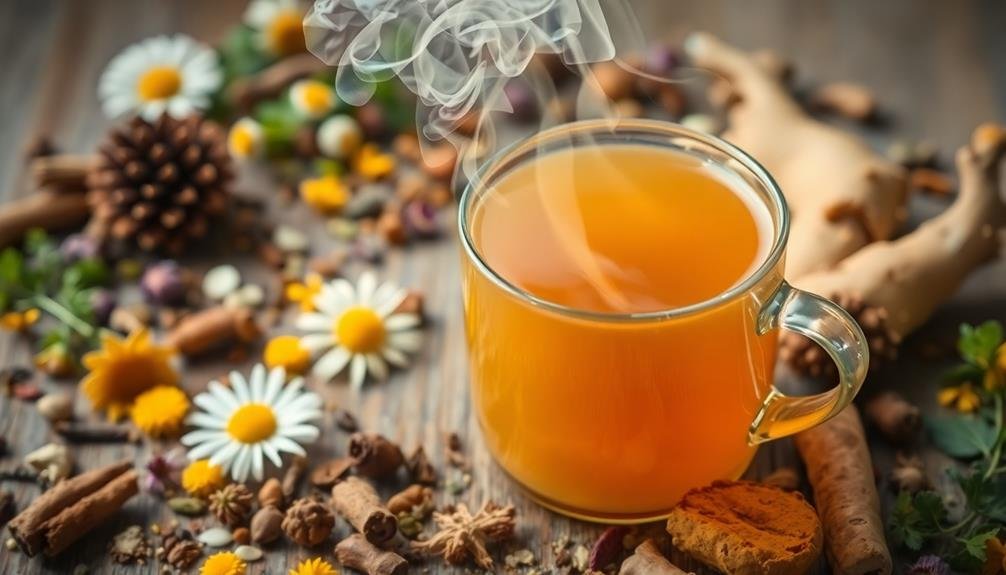
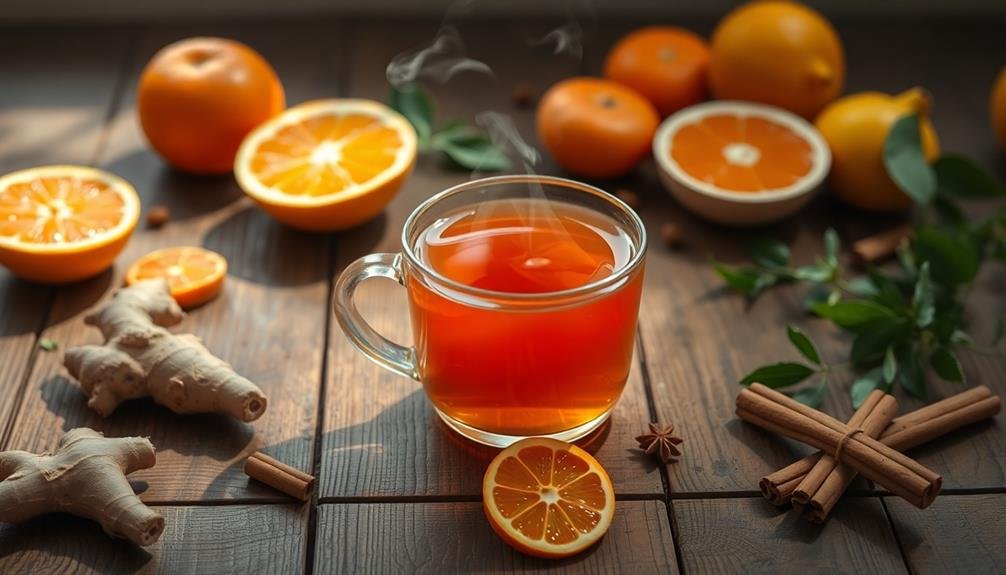
Leave a Reply